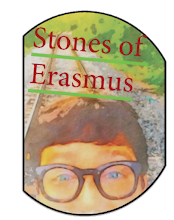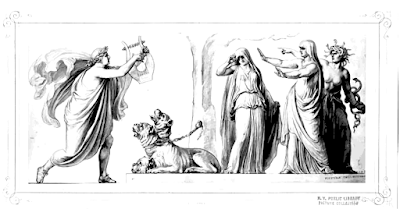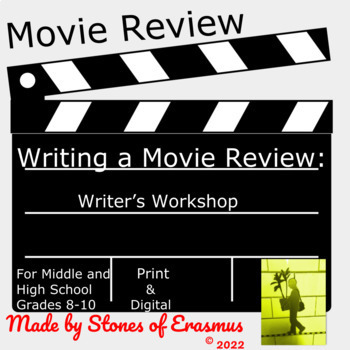Stones of Erasmus — Just plain good writing, teaching, thinking, doing, making, being, dreaming, seeing, feeling, building, creating, reading
17.4.25
What Three People Said About Using My Humanities Resources in the Classroom with Actual Students
 I am an educator and a writer. I was born in Louisiana and I now live in the Big Apple. My heart beats to the rhythm of "Ain't No Place to Pee on Mardi Gras Day". My style is of the hot sauce variety. I love philosophy sprinkles and a hot cup of café au lait.
I am an educator and a writer. I was born in Louisiana and I now live in the Big Apple. My heart beats to the rhythm of "Ain't No Place to Pee on Mardi Gras Day". My style is of the hot sauce variety. I love philosophy sprinkles and a hot cup of café au lait.
20.3.25
Unlocking Greek Mythology: Fresh Vocabulary Lessons Your Students Will Love Before Spring Break!
 |
| I sell quality humanities-content on TpT. Thank you for supporting Stones of Erasmus. |
 |
| Students love working with these myth-related vocabulary cards. Buy them on the Stones of Erasmus TpT store. |

 I am an educator and a writer. I was born in Louisiana and I now live in the Big Apple. My heart beats to the rhythm of "Ain't No Place to Pee on Mardi Gras Day". My style is of the hot sauce variety. I love philosophy sprinkles and a hot cup of café au lait.
I am an educator and a writer. I was born in Louisiana and I now live in the Big Apple. My heart beats to the rhythm of "Ain't No Place to Pee on Mardi Gras Day". My style is of the hot sauce variety. I love philosophy sprinkles and a hot cup of café au lait.
14.2.24
Valentine, Christian Martyr and Saint — Resources for the Middle and High School Humanities and English Language Arts Classroom
Hey, y'all. I feel like Valentine's Day is such an ingrained part of American school life; however, few of us know the actual, legendary story. So—let's rectify that with a true-to-the-source resource on Valentine, a Christian martyr from Rome in the Third Century. Let's go!
 |
| You'll love this historically-based resource detailing the mystery surrounding Valentine the Saint and Valentine's Day. Download it here from my TpT store. |
Happy Valentine's Day! I'm thrilled to share my latest educational adventure with you! We're diving into the mysterious world of Saint Valentine, a figure whose story is as fascinating as it is enigmatic. In 1969, the Catholic Church made the intriguing decision to remove Saint Valentine from its liturgical calendar, citing doubts about his true identity. Was there one Valentine, or several figures merging into this legendary name? This captivating question is the cornerstone of our new resource, designed to spark curiosity and critical thinking among students.
What's Inside This Resource?
- Print and Digital Access: Get your hands on both PDF and Google Workspace formats, plus Easel integration.
- Three-Day Lesson Plan: Complete with insightful teacher's notes.
- Key Characters and Places Anchor Chart: Situate Valentine in his ancient Roman milieu of the 3rd century.
- Reading Cards: Dive into the 'Lives of the Saints' and a detailed dictionary entry on Saint Valentine, each enriched with art and literary connections.
- Note-taking Template & 16-Question Bank: Tailored for both teachers and students.
- Exit Ticket: A crucial tool for assessing student understanding and a foundation for research and writing assignments.
- Frayer Model Vocabulary Template: Engage students visually and creatively in understanding vocabulary.
- Research Paper Prompt: Encourage students to explore the historical depths of Saint Valentine's life and legends.
- Further Reading List: Far from just a bibliography, this is a treasure trove for deeper exploration and student projects.
Designed for middle and high schoolers, this resource fits seamlessly into thematic lessons around Saint Valentine's Day in English Language Arts and Humanities classes.
Even More Love for Your Lessons:
For full access to this resource and more, navigate to my website, Stones of Erasmus. Let's explore the heart of history together!
 I am an educator and a writer. I was born in Louisiana and I now live in the Big Apple. My heart beats to the rhythm of "Ain't No Place to Pee on Mardi Gras Day". My style is of the hot sauce variety. I love philosophy sprinkles and a hot cup of café au lait.
I am an educator and a writer. I was born in Louisiana and I now live in the Big Apple. My heart beats to the rhythm of "Ain't No Place to Pee on Mardi Gras Day". My style is of the hot sauce variety. I love philosophy sprinkles and a hot cup of café au lait.
5.8.23
Unleashing Creativity: Crafting Engaging Digital Content for Humanities Education
As a passionate educator, I've dedicated countless hours to crafting engaging digital content for middle and high school humanities teachers. The intricate process involves dozens of steps and takes up to six hours per listing. But the result? A treasure trove of resources that bring depth and engagement to the classroom.
My journey begins with sourcing public domain content from libraries such as the New York Public Library digital collections and public domain content I find on Google Books and from the Library of Congress. These timeless resources serve as the foundation upon which I build. I then add my original lesson plans, question banks, exit tickets, writing prompts, and activities. The aim? To create content that not only educates but also captivates.
Sometimes, the raw materials need a little sprucing up. An illustration from a nineteenth-century book might be old and dingy, or text from a public domain source might be outdated. That's where Adobe Photoshop and Illustrator come into play, helping me breathe new life into these resources.
 |
| Revitalizing history: the top image showcases my restoration of a 19th-century lithograph, significantly enhancing its clarity compared to the original below. Retrieved from the NYPL digital collection. |
 |
| I partner with TpT to provide educational content for Humanities and English language arts teachers. |
 I am an educator and a writer. I was born in Louisiana and I now live in the Big Apple. My heart beats to the rhythm of "Ain't No Place to Pee on Mardi Gras Day". My style is of the hot sauce variety. I love philosophy sprinkles and a hot cup of café au lait.
I am an educator and a writer. I was born in Louisiana and I now live in the Big Apple. My heart beats to the rhythm of "Ain't No Place to Pee on Mardi Gras Day". My style is of the hot sauce variety. I love philosophy sprinkles and a hot cup of café au lait.
3.8.23
Engaging ELA Lessons: Exploring the Greek Myth of Orpheus and Eurydice with Middle and High School Students
 |
| Stones of Erasmus offers an Educational Download designed to teach the myth of Orpheus and Eurydice |
In the realm of English Language Arts (ELA), the ancient, tragic tale of the Greek myth of Orpheus and Eurydice offers a rich tapestry of themes and lessons for middle and high school students. Stones of Erasmus has created a comprehensive educational resource that provides an engaging, interactive, and distance-learning optimized approach to this timeless tale.
 |
| Orpheus enters the underworld. Image Credit: NYPL Digital Collections |
The story of Orpheus, the divine musician who loses his wife Eurydice twice, is a poignant exploration of love, loss, and the creative power of music and art. Our resource brings this myth to life in the classroom, whether virtual or physical, through a variety of activities and discussion prompts.
Over a three-day lesson plan, students will delve into the myth, analyze its characters and themes, and engage in critical thinking. The resource includes:
1. Art + Literature Connections: Students compare the myth with artwork by renowned artists like Auguste Rodin, fostering a deeper understanding of the story.
2. Reading Cards: This lesson is most effective when supplemented with diverse texts from Edith Hamilton's Mythology, Bulfinch's Mythology, and Ovid's Metamorphoses. However, the resource also includes an introductory dictionary entry on classic Greek and Roman mythology for a comprehensive start.
3. Reading Comprehension and Critical Thinking Questions: These questions encourage students to delve deeper into the text, promoting comprehension and critical thinking.
4. Frayer Model Vocabulary Cards: This visual approach to vocabulary helps students understand terms, geography, and challenging words in the context of the story.
5. Exit Tickets: These provide immediate feedback on students' understanding of the lesson, helping teachers adjust future instruction as needed.
6. Essay Writing Activity: This activity caps off the lesson, allowing students to express their understanding of the myth in a creative way.
Our resource aligns well with the Common Core Standards, particularly the reading literature standard that encourages the analysis of a subject or key scene in two different artistic mediums.
Whether used as a stand-alone lesson or paired with a larger unit on Myth, Percy Jackson and the Lightning Thief, Robert Graves’s Greek Myths, or Edith Hamilton’s Mythology, or Parallel Myths by J.F. Bierlein, this resource offers a comprehensive and engaging exploration of the tragic love story of Orpheus and Eurydice.
For more resources like this, visit the Stones of Erasmus TpT store, and join us on our journey to make ELA education more engaging and interactive.
 I am an educator and a writer. I was born in Louisiana and I now live in the Big Apple. My heart beats to the rhythm of "Ain't No Place to Pee on Mardi Gras Day". My style is of the hot sauce variety. I love philosophy sprinkles and a hot cup of café au lait.
I am an educator and a writer. I was born in Louisiana and I now live in the Big Apple. My heart beats to the rhythm of "Ain't No Place to Pee on Mardi Gras Day". My style is of the hot sauce variety. I love philosophy sprinkles and a hot cup of café au lait.
20.7.23
Kronos (Chronus) Dethroned: Otherwise Known as Saturn Retold in an Engaging 3-Day Lesson from Stones of Erasmus
@cafedumonde "I use my Granny voice and tell the story of Cronus and how he was dethroned by Zeus, thus beginning the Titanomachy." #GreekMythology #Cronus #Zeus #Titanomachy #Storytelling #ancientlegends ♬ Moonlight Sonata - Beethoven - Classical Piano - Instrumental Classical Music - Classical Playlist - Sleeping Music - Music For Relaxation - Classical Piano & Classical Music & Classical
In the intricate tapestry of Greek mythology, few figures stand as tall as Kronos, or Saturn, the eminent ruler of the Titans. The child of Gaia, the earth, and Uranus, the sky, Kronos epitomizes a generation of divine entities that have forever etched their stories in our cultural psyche. Commonly recognized as the God of Time, a title possibly introduced later by Greek writers like Hesiod, Kronos' tale commences at the heart of the cosmos, quite literally birthed from the earth and sky.
 |
| Rhea tricks Kronos |
A pivotal figure, Kronos ascended to power in a manner that was anything but ordinary. In a bold move of patricide, he seized power from Uranus, his father, through a gruesome act of castration. Ouch. This gruesome act had far-reaching consequences. In a twist of mythological irony, the remains of Uranus's severed genitals mingled with the sea and gave birth to Aphrodite, the Goddess of Love. And that's what love's got to do with it — a tale that powerfully demonstrates the interconnectedness of love and strife.
Kronos' union with Rhea, one of the Titanides, was steeped in tumult and apprehension. Haunted by the specter of his brutal ascension, Kronos was convinced that his children would repeat his actions. Driven by fear and paranoia, he devoured each newborn — Hestia, Demeter, Hera, Hades, and Poseidon. However, Rhea, weary of her husband's horrifying dietary habits, hatched a plan to save their last child, Zeus.
In an act of maternal bravery, Rhea tricked Kronos by giving him a stone cloaked in infant's clothes instead of her newborn. Meanwhile, Zeus was spirited away to the island of Crete, where nymphs tenderly cared for him until he came of age. As an adult, Zeus infiltrated Kronos' court, cunningly earning the Titan King's trust as his cupbearer. When the time was ripe, Zeus served Kronos a potent concoction that caused the Titan to regurgitate his swallowed children. This act marked the beginning of Zeus' retribution, leading to a decade-long war and, ultimately, the retrieval of his rightful Olympian throne.
Indeed, Kronos' narrative is a compelling tapestry of cosmic power plays, familial betrayal, cunning stratagems, and ultimate redemption. Through its rich, engaging tales, Greek mythology continues to captivate, offering timeless lessons on life, power, and destiny.
 |
| Kronos: 3-Day Lesson |
Looking to impart a riveting 3-day lesson to your middle or high school students in English Language Arts or Humanities? We've got you covered. Head over to the Stones of Erasmus TpT store and grab a copy today. Enhance your teaching experience effortlessly.
 I am an educator and a writer. I was born in Louisiana and I now live in the Big Apple. My heart beats to the rhythm of "Ain't No Place to Pee on Mardi Gras Day". My style is of the hot sauce variety. I love philosophy sprinkles and a hot cup of café au lait.
I am an educator and a writer. I was born in Louisiana and I now live in the Big Apple. My heart beats to the rhythm of "Ain't No Place to Pee on Mardi Gras Day". My style is of the hot sauce variety. I love philosophy sprinkles and a hot cup of café au lait.
17.7.23
Teaching the Mythological Marvel: Perseus and Medusa - A Tale of Heroism, Divine Intervention, and Greek Mythology for the Middle and High School Classroom
 |
| The Argive hero Perseus pervades myth, art, and literature. |
Unravel the captivating tale of Perseus, the valiant son of Zeus, and his heroic quest to slay the mortal Gorgon, Medusa. Discover the harrowing circumstances that led Perseus to undertake this perilous mission, from being locked in a chest as a child to seeking revenge against Polydectes, his mother's treacherous husband. Journey alongside Perseus as he ventures to the edge of the world in pursuit of his formidable foe.
 |
| Discover Mythology Resources from Stones of Erasmus |
 I am an educator and a writer. I was born in Louisiana and I now live in the Big Apple. My heart beats to the rhythm of "Ain't No Place to Pee on Mardi Gras Day". My style is of the hot sauce variety. I love philosophy sprinkles and a hot cup of café au lait.
I am an educator and a writer. I was born in Louisiana and I now live in the Big Apple. My heart beats to the rhythm of "Ain't No Place to Pee on Mardi Gras Day". My style is of the hot sauce variety. I love philosophy sprinkles and a hot cup of café au lait.
15.7.23
Writing a Movie Review: Writer's Workshop for Middle and High School Grades 8-10
Incorporating Movies into English Language Arts and Writing Instruction
 |
| Unlock English mastery! Transform your classroom with engaging movie reviews that boost language skills, critical thinking, and student participation. |
What's Included?
Teacher's Note for Using this Resource in the English and Writing Classroom: A helpful guide to ensure you get the most out of the resources provided.
Do's and Don'ts Anchor Chart: A visual guide to direct students on what to include and what to avoid in their movie review.
Fillable Movie Information Sheet for Before, During, and After Viewing: This allows students to track key information and impressions throughout the viewing experience, which helps build their review later.
Extended Written Response, Movie Quotes Double Entry Journal, Parts of a Movie Review Graphic Organizer: These tools support and scaffold students' writing, thinking, and reflection processes.
3 Exit Ticket Strategies for Formative Assessment: These will help you gauge student understanding and progress at the end of each lesson.
Movie Review Skills Assessment, 4-Point Grading Rubric, Student-Facing Checklist, and Grading Sheet: These tools help students self-assess their work and aid teachers in providing clear, fair, and consistent grading.
5-Star Rating and Rough Draft Starter: This provides students a starting point for their review and a simple, familiar way to give their overall rating.
Incorporating movie analysis into your curriculum can be a dynamic way to inspire student engagement and improve their English language and writing skills. By combining entertainment and education, you're teaching them language and skills like critical thinking, analysis, and self-expression.
Related Products
To further extend your resources, consider other products from Stones of Erasmus:
✰ Growing Humanities Bundle for Middle and High SchoolJoin me on this educational journey. Your feedback, comments, and insights are always welcome. Visit my website at stonesoferasmus.com for more resources and ideas.
© 2022-2023 Stones of Erasmus.
 I am an educator and a writer. I was born in Louisiana and I now live in the Big Apple. My heart beats to the rhythm of "Ain't No Place to Pee on Mardi Gras Day". My style is of the hot sauce variety. I love philosophy sprinkles and a hot cup of café au lait.
I am an educator and a writer. I was born in Louisiana and I now live in the Big Apple. My heart beats to the rhythm of "Ain't No Place to Pee on Mardi Gras Day". My style is of the hot sauce variety. I love philosophy sprinkles and a hot cup of café au lait.





